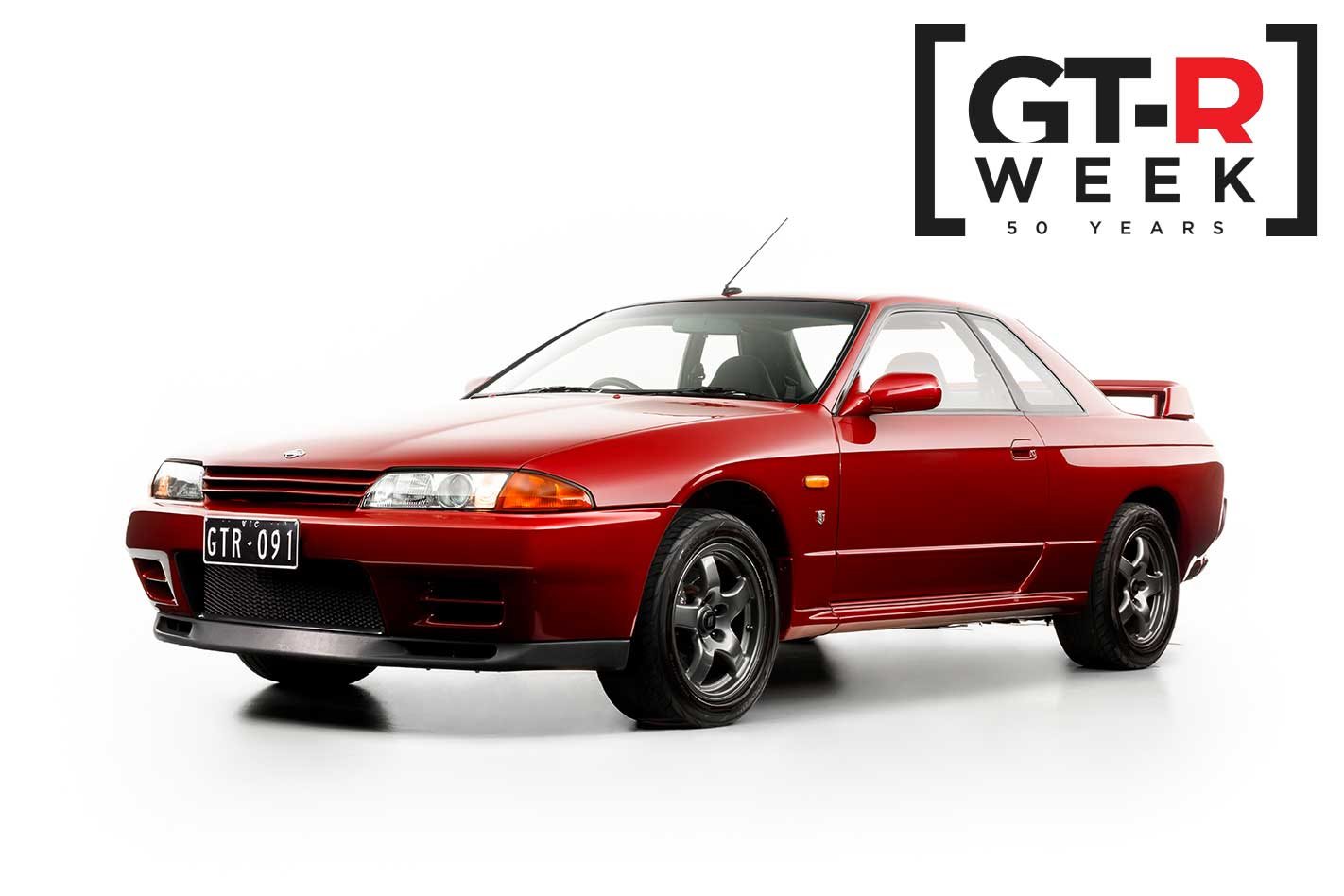Given the lack of flair in most current Nissan products, it’s difficult to remember that for a brief period between 1989 and about 1994 the Nissan Motor Company was a dynamic, exciting carmaker hell-bent on global domination.
Yes, you read that correctly. An ambitious global product program called Project 901 (which translated as ‘number one in the ’90s’) was intended to set Nissan on a course for all-out technological warfare, displacing Honda as Japan’s premier car manufacturer in the process. And in the beginning it really did start out well.
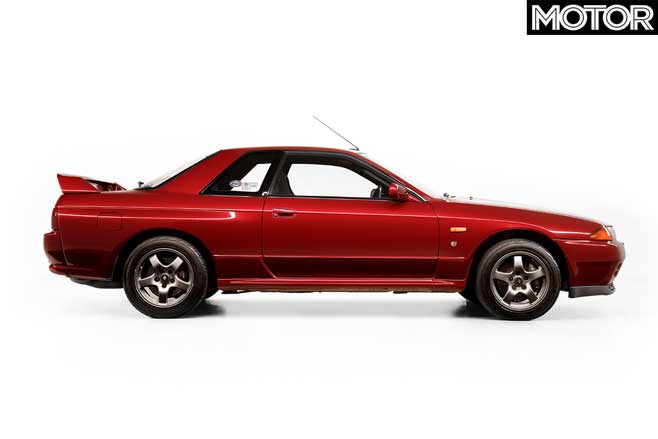
However, the crowning glory was without doubt the 1991 Nissan R32 Skyline GT-R.
Reviving Nissan’s revered GT-R badge after 15 years on the bench, the flagship R32 Skyline was a totally new car, completely at odds with its square-edged rear-drive predecessor. While the R32’s pumped-up form carried a surprising amount of visual restraint for an ’80s Japanese car, the reality was a sublime combination of brute force and beautiful engineering. In mid-1989, the level of technology (with accompanying acronyms) crammed into the GT-R’s compact form was unheard of.
The R32 acted as a flag-waver for Nissan’s burgeoning engineering expertise and featured ‘Super HICAS’ four-wheel steering as well as an ‘ATTESA-ETS’ (Advanced Total Traction Engineering System for All-terrains, with Electronic Torque Split) all-wheel drive system.
The ATTESA set-up could send 100 per cent of the GT-R’s thrust to its limited-slip rear axle until it needed to deploy everything it had, at which point up to 50 per cent of drive could be directed to its surprisingly modest 225/50R16 front tyres.
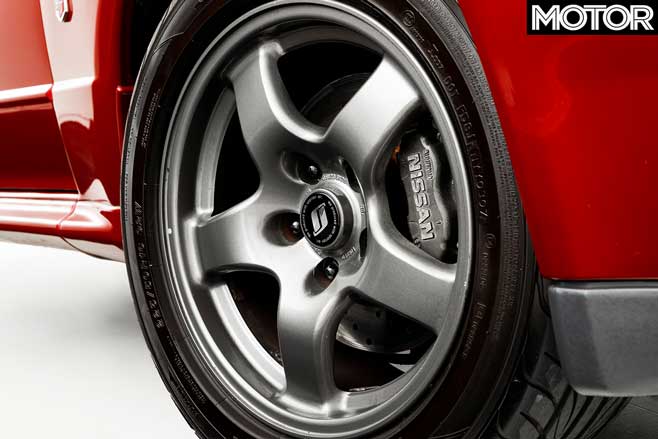
Suspension was a multi-link arrangement at both ends – the front employing a lateral link, trailing strut and diagonal upper control link that located the steering knuckle on each side of the car. And the brakes consisted of 296mm ventilated front discs with four-piston aluminium calipers and 297mm rears with two-piston calipers.
But under the GT-R’s subtly creased aluminium bonnet beat the heart of Nissan’s racecar for the road – the RB26DETT, an engine code that would quickly become common parlance.
Buyer’s Guide: Nissan R32 Skyline GT-R
A 2568cc relative of the RB30E 3.0-litre straight-six engine series already powering Nissan’s R31 Skyline range (and Holden’s VL Commodore) in Australia, the RB26DETT added dual belt-driven overhead camshafts, four valves per cylinder, a pair of ceramic Garrett turbochargers and an intercooler.
The result was a robust 205kW at 6800rpm and 355Nm at 4400rpm – the power figure not coincidentally right on Japan’s old ‘gentlemen’s agreement’ for maximum quoted output. Given the GT-R’s not-so-lithe 1430kg kerb weight in Aussie guise, the reality was probably quite a bit more – especially if you take into account Nissan’s 0-100km/h claim of 5.0sec.
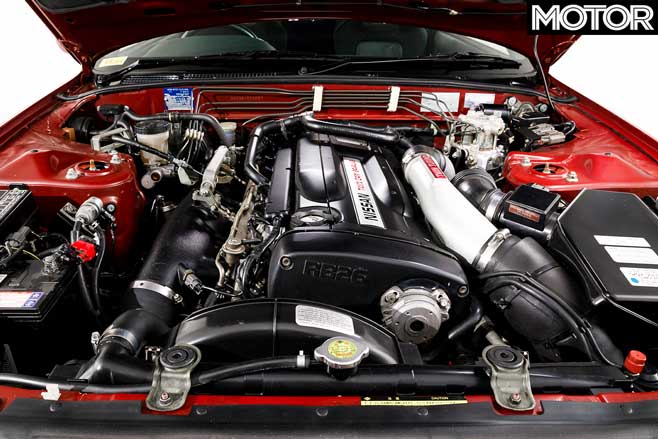
The GT-R’s centre-mounted tacho turned red at 7450rpm, but such was the engine’s balance (and outright brawn) that it could extend all the way to the 8200rpm rev-limiter without its power curve plunging into a hole.
Only the RB26DETT’s driveability characteristics betrayed its late-1980s heritage – the engine needing 3000rpm on board before the fireworks started to erupt, stirred along by a manual transmission with just five gear ratios.
Where all this R32 GT-R hoopla fits into an Aussie context is linked directly to the desires and aspirations of Nissan Australia’s motorsport team and Special Vehicles Division (SVD). And some ill-fated decisions by management.
First, some background.
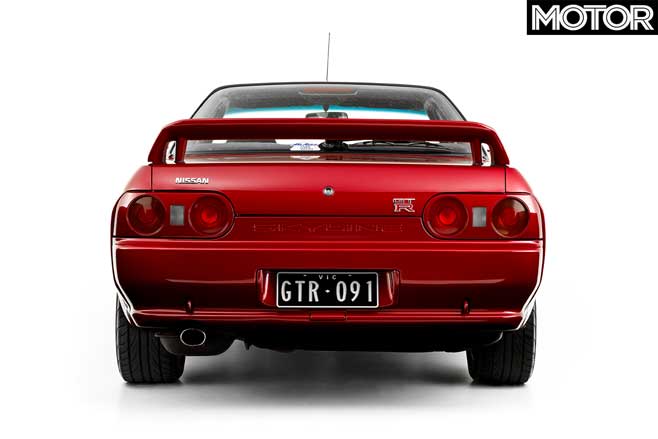
Following several generations of fully imported Skylines, Nissan Japan gave the Australians a green light to fully manufacture the HR31 Skyline in Clayton, in conjunction with a four-cylinder variant (the Pintara) and an Australian-commissioned station wagon – all replacing the rear-drive Bluebird (1981-’86).
The logic at the time was that Australia was predominantly a rear-wheel drive market, and there was a turbocharged Skyline racecar to act as a halo vehicle (which wouldn’t have been the case had the cramped front-drive U11 Bluebird entered local production).
As Paul Beranger, long-time chief of Nissan Australia’s design department (1977-’92) and manager of Nissan’s motorsport division, points out: “The overriding reason we went motor racing, or continued to go motor racing, was because it supported the image of local manufacturing.”

Setting up the Special Vehicles Division in 1987 then acted as a bridge between local manufacturing and motor racing, while producing some terrific road cars like the Skyline GTS sedan.
But management in its wisdom decided that the front-drive U12 Bluebird (the second-gen Pintara, dubbed ‘Project Matilda’ and launched in November 1989) would become Nissan Australia’s great white hope – twinned with a badge-engineered Ford Corsair as part of the Button Plan’s model-reduction target – thereby killing any chance of the R32 Skyline range reaching Australian production. While opening the door for the R32 GT-R.
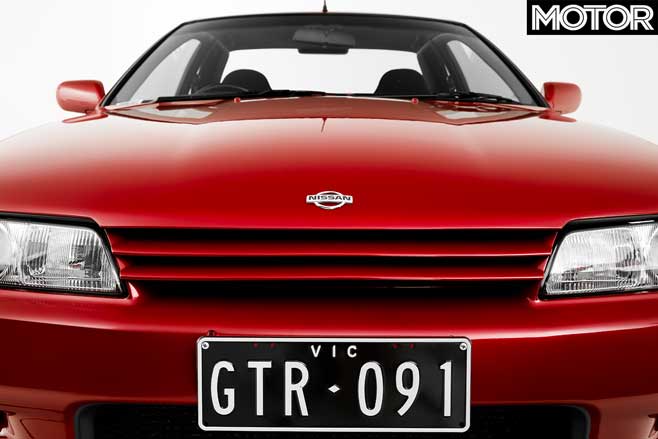
“We always wanted to connect our mainstream product with motorsport, otherwise why bother?” Beranger says. “And after we finished building Skyline at Clayton – which itself was a bad decision because it was a good money-maker for us, and a good car too – we then had to think of another way of making the motorsport connection work.
“We didn’t have a local car that would demonstrate that what we raced on Sunday would sell on Monday. So a guy called Ted Arcadipane, who is essential to this story and was in our business planning group, put together a paper with me on importing the R32 GT-R.”
The DR30 and HR31 Skyline racecars (wearing Peter Jackson tobacco livery) had maintained Nissan’s race presence but couldn’t hold a candle to the R32.
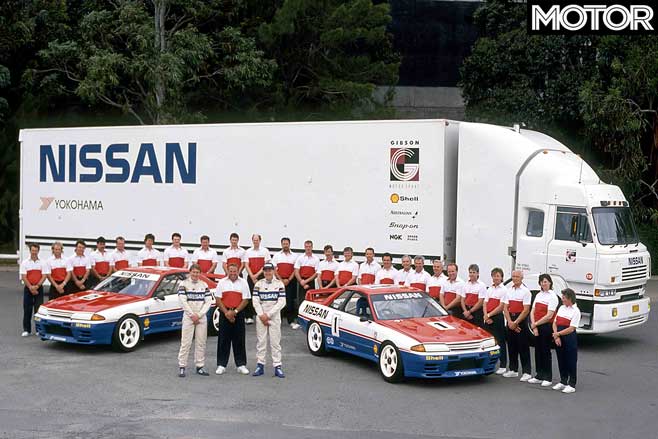
“Given how hard Fred Gibson and his team struggled with the previous Skylines, by the time we got to the R32, I guess we were pre-empting what ultimately happened – that it was going to be the gun vehicle,” Beranger recalls. “We didn’t predict that it was going to destroy Group A [the rules were changed in 1993, effectively banning the all-wheel drive Nissan], but we certainly had a strong feeling that it was going to be the gun car in Australia for motorsport.
“That’s also why we decided to import 100 production cars. We put a business case together with what I knew at the time were the local changes required to get the car ADRed. That went to local management, who approved it, and then we went back to Japan and said, ‘Please can we do this?’”
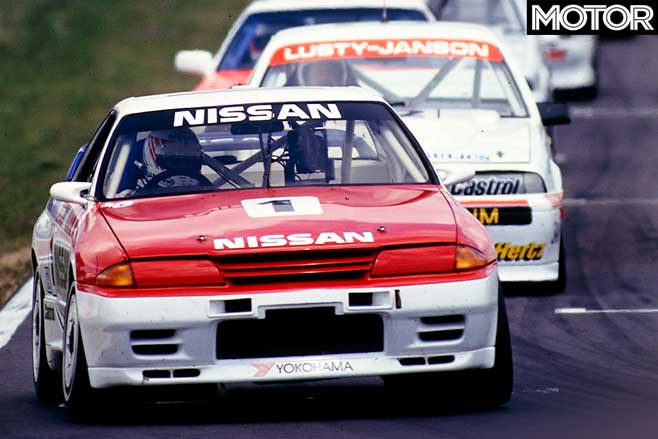
Nissan Australia imported a couple of R32 GT-R road cars in about August ’89 and unveiled them at Bathurst that October, flagging what was to happen with the race team the following season, and one of them was road-tested by Modern Motor in its April 1990 issue. And then the local engineers set about getting their heads around what needed to be modified for the road cars to meet the notoriously fickle Australian Design Rules.
As this was a uniquely Australian initiative, a lot had to be done to the car. “That was our biggest challenge”, Beranger says. “Japan agreed for us to do [the GT-R], but they threw it back on us, saying, ‘Okay, we will support you, but you do the work’ – which was very substantial. The GT-R was only built for Japan’s domestic market, so we needed to make all sorts of changes – radios, headlights and taillights [done by Hella Australia], mufflers for drive-by noise, seatbelts…”
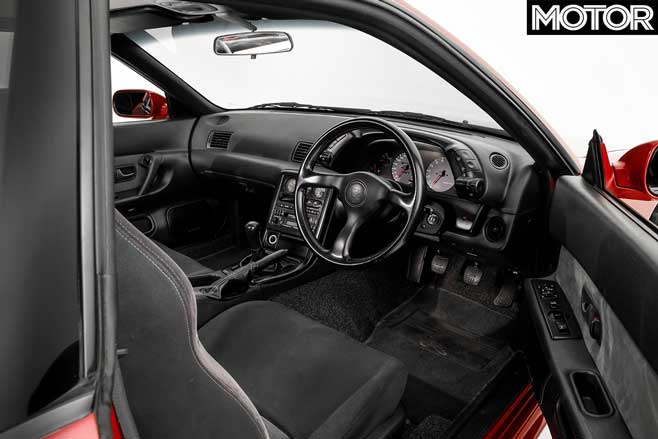
The side turn indicators and rear high-mount stop light were sourced from the 300ZX, the Japanese-market ‘S’ bonnet badge (for Skyline) made way for a Nissan logo, and the GT-R received a new ‘bee-sting’ antenna mounted at the back of the roof “because the Japanese car had a glass-mounted antenna, which was rubbish”.
The Aussies also wanted Yokohama tyres because Nissan’s local motorsport team was sponsored by them, but Japan refused, seeing that the GT-R had been developed around Bridgestones (Potenza RE71s, to be exact).
The GT-R’s mechanicals remained intact, with one notable exception. “We had to add a transmission cooler, because the Japanese engineers did theoretical projections to show that the transmission would overheat in outback Australia if you drove it at 180km/h for two hours!”
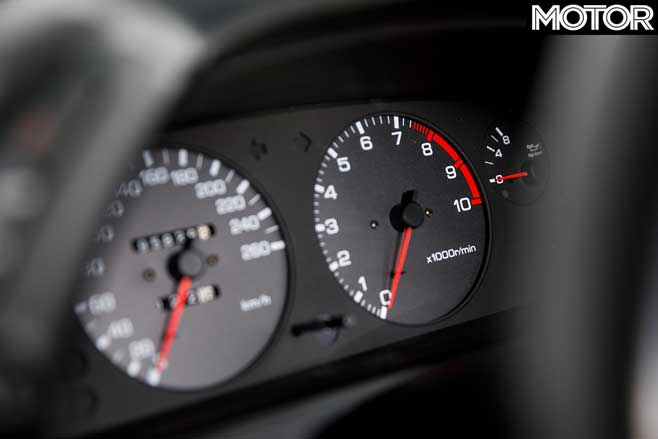
The thing was, at that speed the GT-R would have run out of fuel after about an hour, but as Beranger pointed out: “We didn’t want any delays to the program, so when a Japanese engineer tells you it needs a transmission cooler, you just go along with it and install one.”
The early racecars had a few problems with cracking blocks, which Nismo in Japan fixed by ribbing them, and the Japanese transmissions weren’t up to the stresses of Australia’s fierce Group A competition either – necessitating a switch to a locally made Hollinger ’box that proved both much tougher and cheaper. When the road cars went on sale in mid-’91, there was no impediment to the GT-R’s excellence.
Journalists loved the car, gushing over its dynamics. Its superb steering feel and response – astounding for a 4WS car of the era – the adjustability of its handling balance (even power oversteer!) and the surefooted sophistication of its all-round chassis talent instantly elevated the ballsy Nissan super-coupe to legend status. It truly was Godzilla.
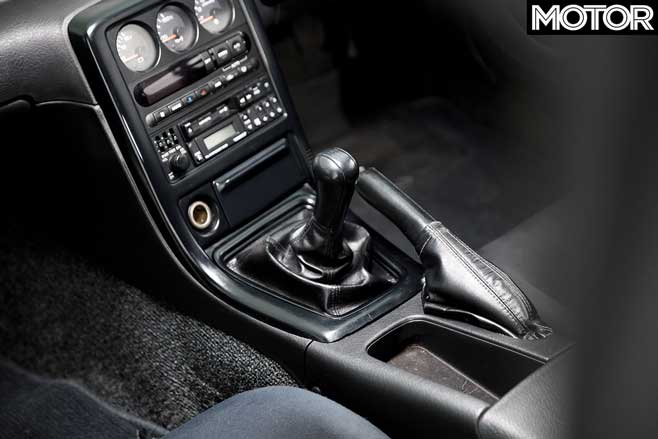
But so was its price. The race GT-Rs were already winning local races, which made some inside Nissan Australia excited and, unfortunately, money-hungry.
“The Japanese were just as surprised about the $110,000 price tag as many of us in Australia were,” Beranger muses, “but that was just a greedy sales team believing they could make a killing. And they fell over with that one.
“The GT-R was so much more expensive than a [$70K] 300ZX that it was very difficult for people to accept that a Nissan, however technically advanced, could cost $110,000 [$210K in today’s money] … and that ultimately caused the car to bog down in the dealerships. It really struggled.”
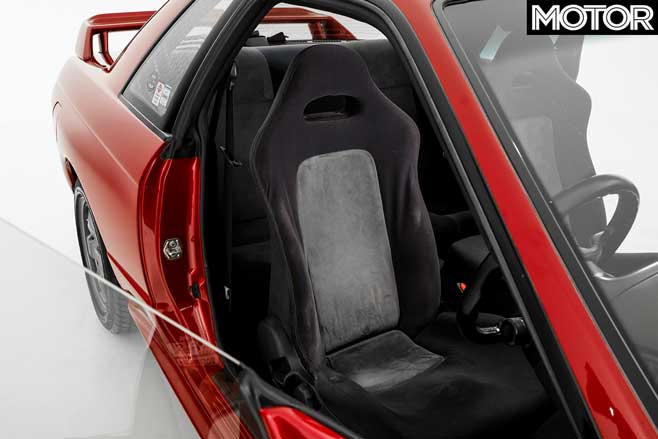
Our 100 GT-Rs were built in several batches during 1991 – 28 cars in May, 22 in June, and the remaining 50 in August. To reduce complexity, they were only available in three colours (Black Pearl, Jet Silver and Red Pearl – split 30/25/45) rather than the nine variations offered in Japan, and each was jam-packed with equipment.
But there were still unsold cars hanging around in dealerships 12 months later acting as ‘demo’ cars. Had the GT-R been more realistically priced – “I think from memory we were talking $80K-$85K, something like that, and it would’ve made money, absolutely” Beranger claims – then things might have turned out differently.
Still, it hasn’t stopped Aussie-plated GT-Rs pulling close to that amount three decades later. Today, no one remembers (or cares) that the GT-R was overpriced at launch, and probably underrated by the broader public at the time. Instead, the R32 Skyline GT-R has transcended all of that, as well as the ultimate failure of Project 901 to deliver on Nissan’s bold promise.

Thanks to the global reach of PlayStation and Gran Turismo, not to mention grey vehicle imports, history has completely rewritten the way people view the R32, especially in the places like the US where it was never sold. It remains Nissan’s hero car and has since left the rest of the excellent R32 Skyline range trailing off into history.
The following R33 GT-R of 1995 – while undoubtedly tough-looking and available in many more markets – simply gained weight and girth over its svelte predecessor, leaving the R32 standing proud as the purest of its type.
Nissan Japan ended up building 43,937 R32 Skyline GT-Rs across a five-year period – a significant number when you think about it – but what’s of even greater importance is that this was Godzilla at its sweetest. A never to be repeated combination of brawn and brains, brimming with visual restraint and emotional swagger.
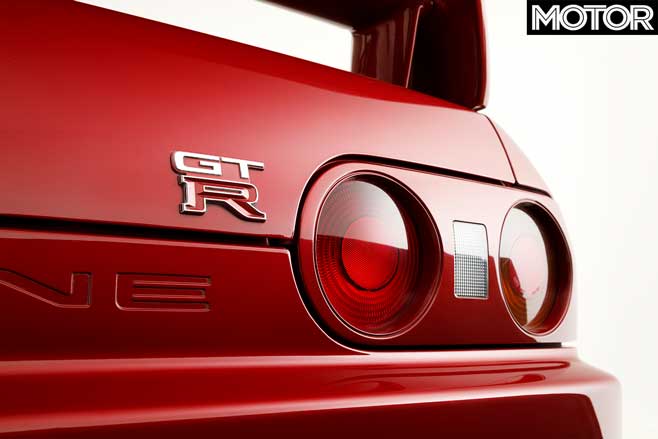
FAST FACTS 1991 Nissan R32 Skyline GT-R BODY: 2-door, 2+2 seat coupe DRIVE: all-wheel ENGINE: 2568cc inline-6, DOHC, 24v, twin-turbocharged BORE/STROKE: 86.0 x 73.7mm COMPRESSION: 8.5:1 POWER: 205kW @ 6800rpm TORQUE: 355Nm @ 4400rpm WEIGHT: 1530kg (kerb) POWER-TO- WEIGHT: 134kW/tonne TRANSMISSION: 5-speed manual SUSPENSION: multi-links, coil springs, anti-roll bar (f); multi-links, coil springs, anti-roll bar (r) L/W/h: 4545/1755/1340mm WHEELBASE: 2615mm TRACKS: 1480/1480mm (f/r) STEERING: power-assisted rack-and-pinion; rear-steering BRAKES: 295mm steel ventilated discs, 4-piston calipers (f); 297mm steel ventilated discs, 2-piston calipers (r) WHEELS: 16.0 x 8.0-inch (f/r) TYRES: Bridgestone Potenza RE71; 225/50 VR16 (f/r) PRICE: $110,000 (new)

